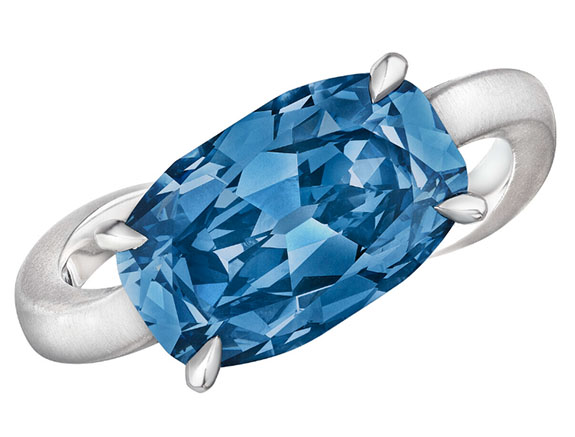The California Sunset Diamonds, a super-rare matched pair of fancy vivid orange-yellow sparklers, are set to headline Christie's Magnificent Jewels sale in New York on December 6. The fancy-color diamonds weigh 12.20 carats and 11.96 carats, respectively.
Orange diamonds are highly coveted, yet hardly ever come to auction. Appropriately, Christies's assigned the gems with a pre-sale estimate of $7 million to $12 million, reflecting the size, color saturation, clarity and extreme rarity of the oval mixed-cut fancy color gems.
The Gemological Institute of America (GIA) monograph accompanying the stones emphasized the rarity of fancy vivid orange-yellow diamonds with this statistic: Only 1/3 of 1% of fancy-color diamonds submitted to GIA's grading lab over the past 10 years were graded as "fancy vivid orange-yellow."
The website naturaldiamonds.com describes orange diamonds as "the most infrequent occurrence of orange in nature," and colored-diamond specialists Leibish affirms that orange diamonds are the second rarest colored diamonds, with red being the rarest.
Set as dangle earrings in platinum and 18-karat rose gold, the California Sunset Diamonds are complemented by oval brilliant-cut white diamonds weighing 3.03 and 3.02 carats, as well as white marquise-cut accent stones each weighing .73 carats. The larger of the two orange-yellow diamonds boasts a clarity grade of VVS2, while the other has a VS1 rating.
Another top lot in the same auction will also feature an orange-hued diamond. The pear-shaped, mixed-cut fancy vivid yellowish-orange diamond seen here weighs 5.16 carats, is set in an 18-karat yellow gold ring and carries a pre-sale estimate of $1.5 million to $2 million.
Orange diamonds are rated on a color scale from pale orange to deep orange with the following designations from light to dark: Light Orange, Fancy, Fancy Intense Orange, Fancy Vivid Orange and Fancy Deep Orange.
Scientists are still somewhat baffled about how orange diamonds get their color, because their hue on the spectrum is sandwiched between yellow and red.
Unlike yellow diamonds that owe their color to the presence of nitrogen in their chemical makeup, pink and red diamonds owe their color to the effects of intense pressure, heat and twisting while they were still deep within the Earth. So there could be multiple factors at work to generate the rich orange hue.
The New York auction's second-priciest lot is expected to be a fancy vivid blue cushion modified brilliant-cut diamond weighing 3.49 carats. The internally flawless gem is set in a brushed platinum ring and is predicted to fetch between $4.5 million and $5.5 million.
Credits: Images courtesy of Christie’s.




